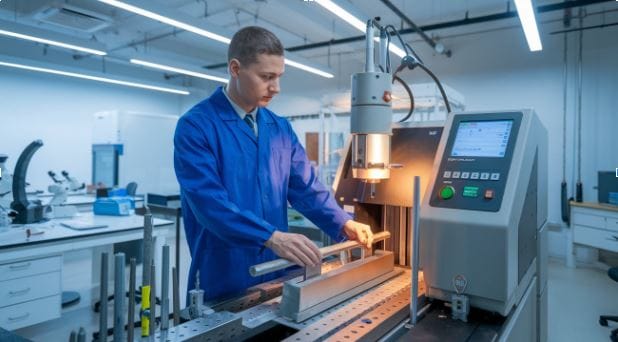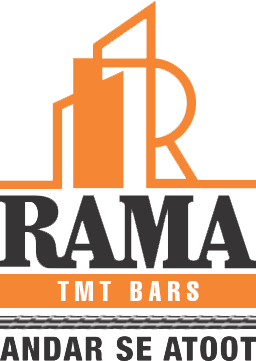When constructing robust buildings and infrastructure, the choice of materials plays a pivotal role. Among the core components, Thermo-Mechanically Treated (TMT) bars are essential in ensuring the strength and flexibility of a structure. Two critical properties—yield strength and elongation—determine the performance and reliability of TMT bars. Here’s why these characteristics matter.

Understanding TMT Bar Grades
TMT bars are categorized into different grades, each denoting specific mechanical properties with the best for various construction needs. The primary tmt bars grades include Fe 500, Fe 500D, Fe 550, and Fe 550D. The ‘Fe’ symbolizes iron, while the subsequent number indicates the minimum yield strength in megapascals (MPa). The ‘D’ in certain grades stands for ‘Ductility,’ signifying enhanced elongation and flexibility.
For instance, TMT bars manufacturer offers bars in sizes ranging from 8mm to 40mm, adhering to these grades. Their Fe 550D bars, for example, boast a minimum yield strength of 565 MPa and an elongation percentage of 16%, ensuring both robustness and ductility.
Comprehensive Quality Assessments for TMT Bars
To ensure TMT bars meet stringent industry standards, they are subjected to various tests that evaluate their mechanical and chemical properties. These assessments confirm the bars’ capability to withstand diverse stresses and environmental conditions encountered in construction.
Evaluating Tensile Strength
The tensile test determines the maximum stress a TMT bar can endure when subjected to stretching forces before failure. Conducted using a Universal Testing Machine (UTM), this test involves applying a uniaxial tensile force to a sample until it fractures. The resulting data provides insights into the bar’s ultimate tensile strength, yield strength, and elongation, ensuring it can handle substantial loads without compromising structural integrity
Assessing Yield Strength
Yield strength testing identifies the stress level at which a TMT bar transitions from elastic deformation to plastic deformation. Before reaching this point, the bar can return to its original shape upon load removal. Beyond this threshold, permanent deformation occurs. This test ensures that TMT bars possess the necessary strength to support structural loads without undergoing irreversible changes in shape.
Conducting Bend and Re-bend Tests
The bend test evaluates a TMT bar’s ductility and ability to withstand bending without cracking. In this assessment, the bar is bent to a specified angle, typically 180 degrees, and inspected for any signs of fractures or cracks. The re-bend test further examines the bar’s resilience by bending it back to its original position or another predetermined angle after subjecting it to conditions like aging or heating. These tests confirm that the bars can endure the bending stresses encountered during construction without compromising their structural integrity.
Performing Chemical Composition Analysis
Understanding the chemical makeup of TMT bars is crucial, as it influences their mechanical properties and corrosion resistance. This analysis involves examining the proportions of elements such as carbon, manganese, sulfur, phosphorus, and silicon. A sample segment of the bar is analyzed using techniques like Optical Emission Spectrometry or X-ray Fluorescence spectroscopy. Ensuring the correct chemical composition guarantees that the bars achieve the desired balance of strength, ductility, and durability.
Additional Quality Assurance Tests:Beyond the primary
assessments, several other tests are conducted to ensure TMT bars meet comprehensive quality standards:
- Corrosion Resistance Evaluation: This test exposes TMT bars to corrosive environments to assess their durability, especially in areas prone to high humidity or salinity. Methods like the Salt Spray Test simulate long-term exposure to corrosive agents, ensuring the bars maintain their integrity over time.
- Impact Testing: This assessment measures the toughness of TMT bars by determining their ability to absorb energy during sudden impacts. A sample is struck with a pendulum hammer, and the energy absorbed before fracture is recorded. High impact resistance is crucial for structures subject to dynamic loads or potential collisions.
- Fatigue Testing: This test evaluates the TMT bars’ ability to withstand repeated loading and unloading cycles, which is essential for structures like bridges and high-rise buildings that experience fluctuating stresses. By subjecting the bars to cyclic loading, the fatigue test ensures they will not fail prematurely under repetitive stress conditions.
- Dimensional Inspection: Ensuring that TMT bars adhere to specified dimensional tolerances is vital for their application in construction. This inspection verifies parameters such as diameter, length, and straightness, confirming that the bars meet the required standards for seamless integration into building frameworks.
The reliability and longevity of a construction project are deeply influenced by the quality TMT bars utilized. By comprehensively understanding the various grades and rigorously testing these bars through multiple assessments, stakeholders can ensure that their structures are both safe and durable. Partnering with a reputable TMT bar manufacturer, adhering to stringent quality control measures, further guarantees that the materials used will uphold the highest standards in the industry.
